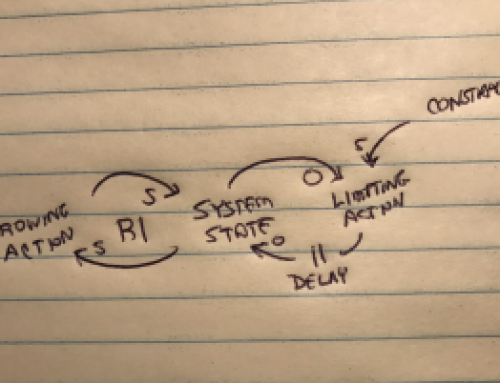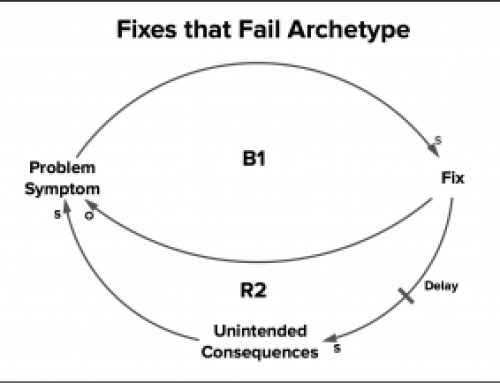When you stop and reflect at a macro level about your organization and the forces at work that either move your business forward with growth and progress or hold you back, what answers do you come up with? Many times when contemplating such a question, it is easy to think at a very vague level about things like “our company is young and vibrant”, “our market is just down,” “we have good sales people,” or “our products are old,” or to slip down into very tactical things like “lack of sales in the past two quarters,” “need to replace a couple of managers who seem to be failing,” or “our marketing is just not good strong enough.” Without a framework to structure your thinking and analysis, it is simply too easy for company leadership as a whole to “swat” at various theories and ideas like swatting at mosquitoes.
Companies, whether small or large, are much like living organisms. Organizations are born, grow, mature, and certainly age, and die (go bankrupt or just close). L.E. Greiner first developed this life cycle model of an organization based on the size and age of an organization. Ichak Adizes followed up on Greiner’s work to more fully develop a model that is basically what you see in this “Corporate Life Cycle” chart. I will write more about the model itself later and each life cycle, but for now the salient point is that the PRIME life cycle is the desired state for optimal growth and that organizations move through a predictable and observable pattern from life cycle to life cycle.
The corporate lifecycle model has become the basis of much discussion and actual consulting practices, including one of the two pillars of my own practice in partnership with Corporate Lifecycles Associates. Why does this model make sense in terms of evaluating where you are as a business today and what you can do to be the most successful organization possible? In this introduction, I want to suggest that there are three significant reasons to give some attention to this life cycle framework in terms of evaluating your business.
A Filter for Viewing Your Past and Present State
Stepping back to view your business in terms of an organization that moves through natural life cycles gives you a filter in which to evaluate where your organization has been and its current state. As an organization moves through the various life cycles, that organization exhibits clear repetitive patterns of behavior and problems that are quite predictable based on each stage of life. It is a healthy exercise to look back and see when and where these problems occurred and also when and where you experienced success or failure based on these patterns of behavior. With the target life cycle being PRIME, what better way to evaluate how to achieve this than examining the various stages you have experienced and also examining where you are today and the problems you must overcome.
A Framework for Understanding Specific Roadblocks
The problems experienced at various stages of each life cycle become the roadblocks you face in achieving or returning to the PRIME life cycle. This life cycle framework delivers a concise look at the normal problems you will face, the abnormal problems that can arise due to specific conditions, and also, left unchecked, the pathological problems that can arise. This is where leadership must take action. How well or how poorly the leadership of an organization addresses these issues and acts to bring about changes that are necessary to transition to the next stage, or to maximize the benefits at any stage, will determine the success of the organization.
A Tool to Use to Break the Life Cycle
That leads us to the final benefit of this life cycle model – breaking the life cycle to escape aging and death of the organization. With no action, every organization will simply move from birth to death along a predictable path. However, by understanding the life cycles, the problems that naturally exist and must be addresses, and by taking action, you can use your knowledge to reinvigorate the organization and return to an earlier stage and even return to the PRIME life cycle stage. This is where the model departs from the model of a true living organism. Man, for example, cannot turn back the hands of time and become younger. The fountain of youth is but a myth. Man can take steps to stay as healthy as possible, and possibly even purposefully elongate life through various steps. Even then, man must assume certain limits on life. Organizations have far more power to breathe new life into its own fabric and experience rebirth after rebirth. This framework serves well to provide a roadmap of how this can be done.
There are specific opportunities for creating shared understanding of life cycles, collaborating to evaluate structures, management practices, management personnel, and current actions that can result in specific plans and actions that can break you out of the current life cycle stage where appropriate to move towards the PRIME life cycle. This is the true value of spending the time and resources to evaluate your business in the framework of the corporate life cycle model.
What’s Next?
This blog is dedicated to business innovation and learning organization concepts and the corporate life cycle model and the ideas and actions associated with building a learning organization actually belong together. Examine a business in terms of life cycles leads to a strong diagnosis and prognosis for action, and the direction that the framework offers is complimented well by solid learning organization practices. A learning organization naturally evolves steadily towards PRIME. I will continue to write about both in this blog and continue to flesh out more of the life cycle model in detail having started with this introduction.
From Entrepreneur to CEO offers a complete framework and set of coaching and consulting services to get you to PRIME and keep you operating at PRIME. We call this Lead-to-PRIME and you can learn more HERE.


